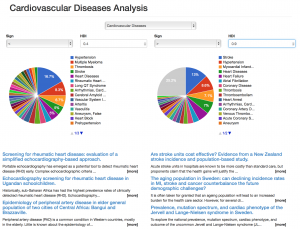Learn more
- Nov 27, 2013
Linked data based search: Make use of linked data to provide means for complex queries
Two live demos of PoolParty Semantic Integrator demonstrate new ways to retrieve information based on linked data technologies
Linked data graphs can be used to annotate and categorize documents. By transforming text into RDF graphs and linking them with LOD like DBpedia, Geonames, MeSH etc. completely new ways to make queries over large document repositories become possible.
An online-demo illustrates those principles: Imagine you were an information officer at the Global Health Observatory of the World Health Organisation. You inform policy makers about the global situation in specific disease areas to direct support to the required health support programs. For your research you need data about disease prevalence in relation with socioeconomic factors.
Datasets and technology
About 160.000 scientific abstracts from PubMed, linked to three different disease categories were collected. Abstracts were automatically annotated with PoolParty Extractor, based on terms from the Medical Subject Headings (MeSH) and Geonames that are organized in a SKOS thesaurus, managed with PoolParty Thesaurus Server. Abstracts were transformed to RDF and stored in Virtuoso RDF store. In the next step, it is easy to combine these data sets within the triple store with large linked data sources like DBPedia, Geonames or Yago. The use of linked data makes it easy to e.g. group annotated countries by the Human Development Index (HDI). The hierarchical structure of the thesaurus was used to collect all concepts that are connected to a specific disease.
This demo was developed based on the libraries sgvizler to visualize SPARQL results. AngularJS was used to dynamically replace variables in SPARQL query templates.
Another example of linked data based search in the field of renewable energy can be tried out here.
Links:
